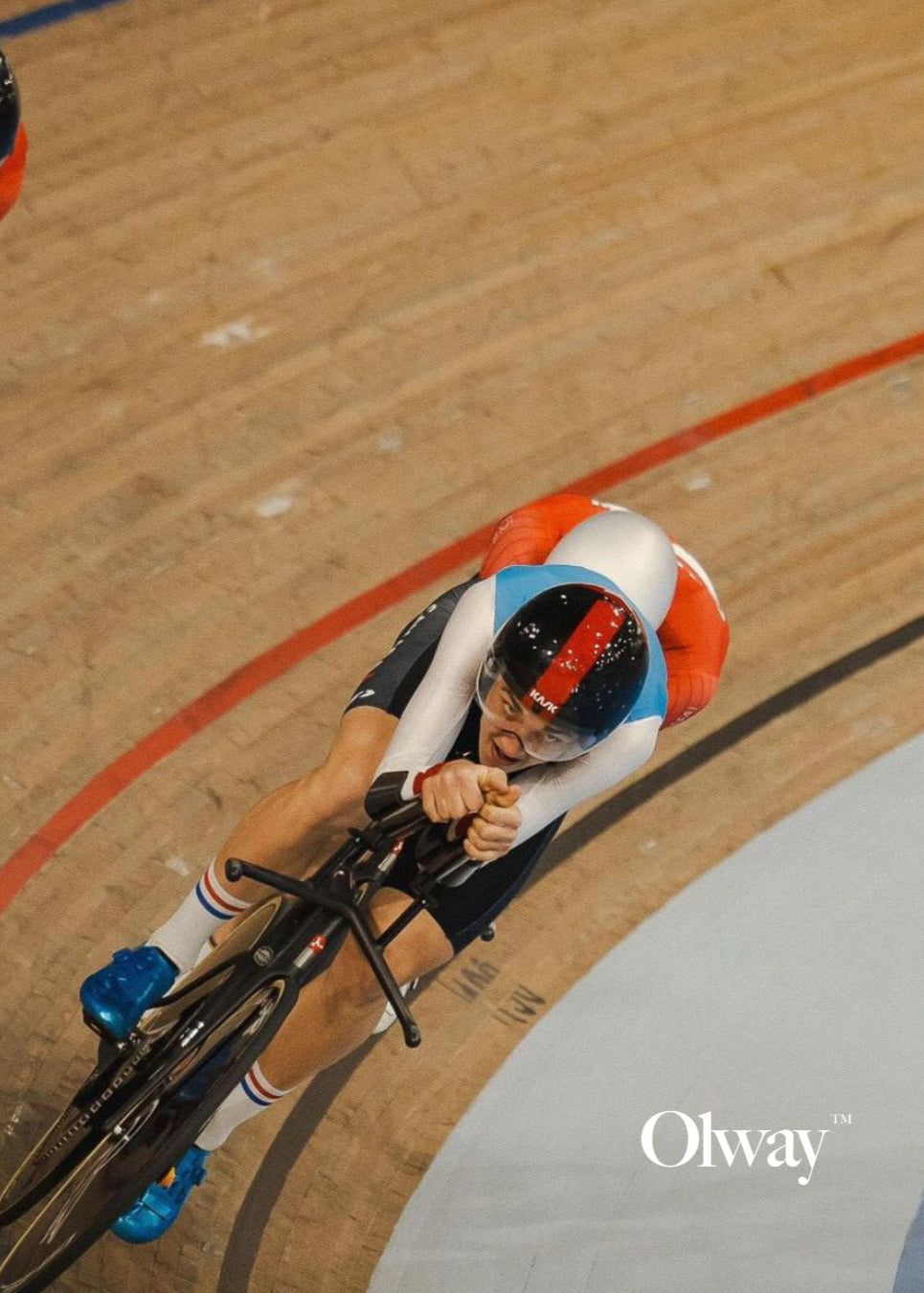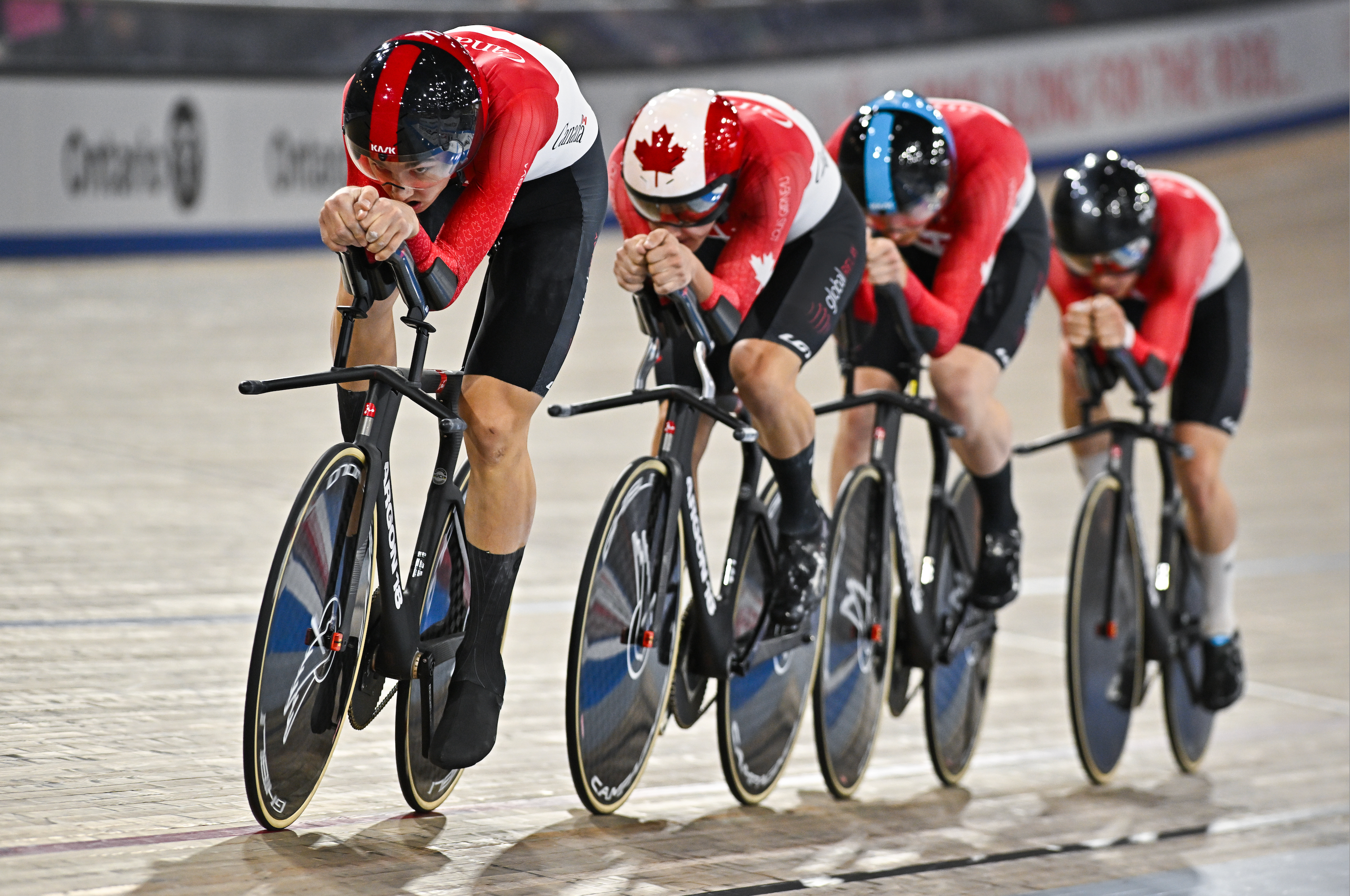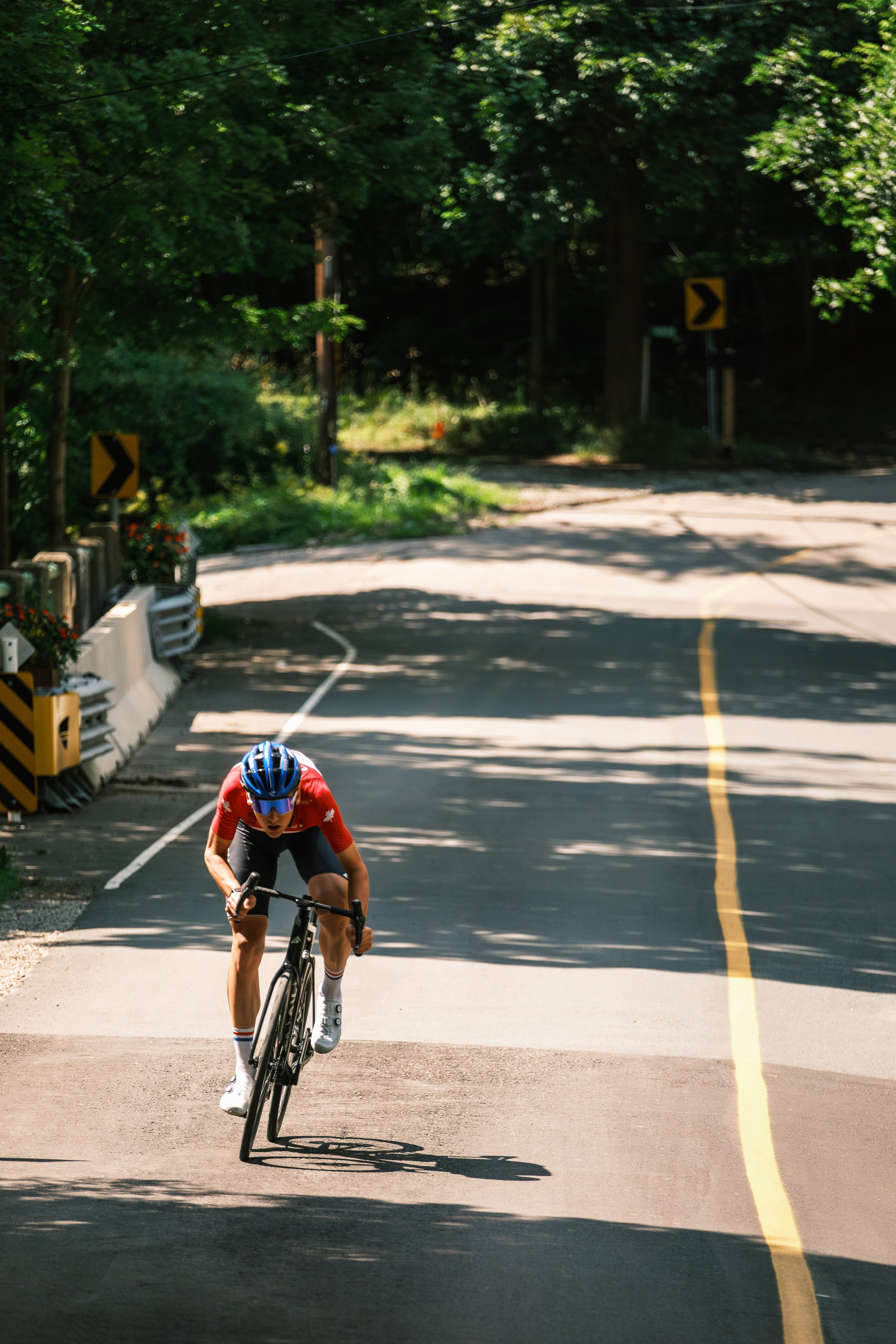
The Velodrome: Fuelling for Explosive Speed
In this Olway™ Story, 3x Junior World Champion Carson Mattern from Ancaster, Ontario dives into the critical role of fuelling for track cycling, a discipline demanding explosive power and intensity. While focused on the track, his insights are applicable to all athletes focused on high intensity or shorter bursts (i.e. hockey shifts, sprint intervals, or Hyrox stations), showing that maximizing accessible energy is key beyond long-distance events.
This season is off to an explosive start for Carson on a new team, TaG Cycling, winning GC in Valley of the Sun and placing 2nd in GC at Tuscon Bicycle Classic.
Introduction
You’d be surprised how many riders I encounter who are astounded by the fuelling behind track cycling – or maybe this is new for you too.
It’s become common knowledge that in endurance sport, carbs = watts. It’s gone so much in the direction of super carb-heavy fuelling plans that, especially in road racing situations, I find it can be hard to keep up. You get so lost in the action that suddenly you realize that you have only taken 1 sip of your bottle. But then there’s the track, and I’m speaking from the “endurance category” point of view. The longest race is the Madison, which is generally just less than an hour. All other bunch races sit in the 10- to 30-minute range, with pursuits being less than four minutes for teams and now individuals, at least if you want a shot at the podium.
Most of us could get on a bike and ride 30-minutes on an empty stomach, so is fueling really just as important for track cyclists as it is for riders of other disciplines? The answer is yes.
Training
To be successful in track cycling, you still need a significant aerobic base – just look at who wins the world championships every year in any given endurance event; it’s usually a world tour rider. While track emphasizes high intensity, building a significant aerobic base requires substantial weekly volume, much like any endurance rider. This means consistent, smart fueling during training is non-negotiable.

In fact, when I get a session that is jam packed with efforts above threshold (a common occurrence when preparing for track competitions), carb intake becomes very important on the bike as in these zones I am burning exclusively carbs and at a very high rate. I feel like I have gotten away with under fuelling many times on lower-intensity rides but in a really grippy session, not having enough energy accessible will result in a drop-off in the quality of the efforts I am able to produce as the day goes on. Further, such a deficit will have a very negative impact on my recovery the next day. Especially if I string together a few hard days in a row without meeting these fueling minimums, I might get to the end of the week wondering why I can’t get out of the blocks fast enough in a team pursuit. Spoiler, I didn’t eat enough.
Racing
Let’s bring it back to racing. If these races are so short, is there really a need to load up on the carbs for a 4-minute ride? The answer is still yes. While the total calories burned in a 4-minute pursuit are lower than a road race, ensuring glycogen stores are fully topped up is crucial.
Pursuit
Consider what I said earlier; over a certain intensity, your body stops metabolizing fat and will exclusively use carbs. The harder you ride, the more carbs it’s going to use. Someone once described pursuiting as a carb-burning contest. While a lot of other facets go into it, this statement is very valid. The more energy your body can tear through in 4-minutes, the faster you are going to go. If I can’t access enough energy to support a 600w output for 4-minutes, I am going off the back. As such, during competitions, it is important that we make this energy as accessible as possible for our bodies. Muscle glycogen is your body’s favourite fuel tank for anaerobic efforts, and it will burn through these stores very quickly when you frequent the higher power ranges. If you are needing to rely on less-accessible fuel tanks in your body, it is already too late as you will not be able to metabolize these energy sources fast enough to keep up with the demand.
There is simply not enough time in track racing for your body to make energy via other routes because it is always full gas. Keeping these stores filled up to the brim is why we need to keep ourselves topped up leading up to the race. If track racing is a test of everybody’s metabolism, you want to make the pipeline from stored energy to useable energy as short as possible because the explosive nature of the effort demands it so.
Omnium
This is just the team pursuit perspective. Consider a discipline like the Omnium. This is a 4-part competition (5-part, if there is a qualifying round) which culminates in a very long and very hard points-race. These competitions used to be held over multiple days, but in the current format they usually take place all within a few hours. The cycle of roller warmups, the racing itself, cooling down and then warming up to do it all over again 10 minutes later makes it a very big day which it is important to fuel for. Even if it only totals out to be 2.5-3h total riding time, most of that is going to be in the threshold and above range. Again, carb burning contest. Not to mention the fact that you cannot eat or drink in the races - everything must be done beforehand, adding an extra layer of calculation to the fueling strategy.
Final Words

It's exciting to see how the fueling revolution that swept through endurance sports is now impacting disciplines demanding explosive power, like track cycling. By optimizing how we access energy, we can push intensities that weren't possible before. This makes me wonder about the untapped potential in other high-intensity sports – could hockey or soccer players unlock new levels by approaching fuelling more strategically?
For my own intense efforts in the velodrome and on the road, I've found drinking carbs is the most effective strategy. Olway™ Performance Drink Mix has become my go-to because it delivers the energy I need without being overly sweet or syrupy. It ticks all the boxes, allowing me to focus purely on the race in front of (or behind) me.
– CARSON MATTERN
Olway™ is a sports nutrition brand empowering all athletes to perform.

![Performance Drink Mix [768g]](http://www.olwayperformance.com/cdn/shop/files/DSC03348.jpg?v=1764958556&width=2000)
![Performance Drink Mix [768g]](http://www.olwayperformance.com/cdn/shop/files/DSC03350.jpg?v=1764958556&width=2000)
![Performance Drink Mix [768g]](http://www.olwayperformance.com/cdn/shop/files/Website_Product_Imagery_6.jpg?v=1765851367&width=2000)
![Performance Drink Mix [768g]](http://www.olwayperformance.com/cdn/shop/files/Website_Product_Imagery.jpg?v=1765851367&width=2000)